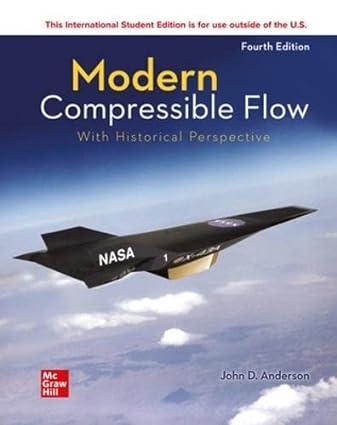Consider air at (p=0.5 mathrm{~atm}) and (T=4500 mathrm{~K}). Assume the chemical species present are (mathrm{O}_{2}, mathrm{O}, mathrm{N}_{2}),
Question:
Consider air at \(p=0.5 \mathrm{~atm}\) and \(T=4500 \mathrm{~K}\). Assume the chemical species present are \(\mathrm{O}_{2}, \mathrm{O}, \mathrm{N}_{2}\), and \(\mathrm{N}\). (Ignore NO.) Calculate the enthalpy in joules per kilogram. In addition to that already given in Problem 16.10, note these physical data: \(K_{p, \mathrm{O}_{2}}=12.19 \mathrm{~atm}, K_{p, \mathrm{~N}_{2}}=0.7899 \times 10^{-4} \mathrm{~atm}\); for \(\mathrm{N}_{2}\), \(\Delta H_{f}^{0}=0, v=7.06 \times 10^{13} / \mathrm{s}\) (ignore electronic levels of \(\mathrm{N}_{2}\) because the first excited level is very high, \(\varepsilon_{\mathrm{el}_{1}} / k=100,000 \mathrm{~K}\), and hence, its population is very low); for \(\mathrm{N}, \Delta H_{f}^{0}=4.714 \times 10^{8} \mathrm{~J} /(\mathrm{kg} \cdot \mathrm{mol})\) (again, ignore electronic levels of \(\mathrm{N}\) because the first excited level is high, \(\varepsilon_{\mathrm{el}_{1}} / k=23,000 \mathrm{~K}\) ).
Step by Step Answer:






